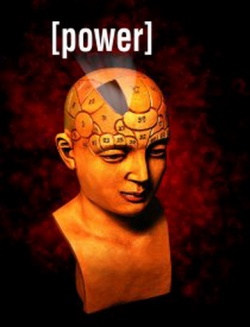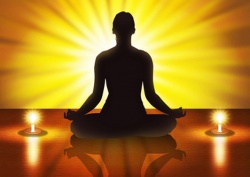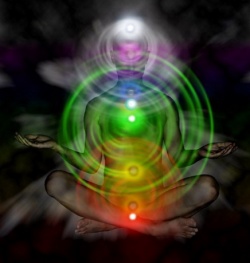Power
Power is a main goal of Buddhist tantra. That’s unique and valuable among Buddhisms.
Power comes from skillful use of energy—personal energy, and also the energy of situations and other people. (See my page on “Unclogging energy” for more.)
Tantra develops confidence, Mastery, and charisma. These are keys to power.
The two faces of power
Power is awkward. Most people—certainly most Western Buddhists—have strong, mixed feelings about it.
On the one hand, power is the ability to get things done. Without power, it is impossible to accomplish anything. Power makes it possible to benefit others, and to change the world for the better. The Bodhisattva vows are goody-goody weaksauce without the power of tantra. Benevolence has little value without the ability to act.
On the other hand, power corrupts. Power is, at best, morally neutral. It can be used for evil as easily as for good. Throughout history, power elites have brutally oppressed and exploited the majority. “Mastery” includes the powers of domination and coercion.
Power is inherently, inescapably political. Power inevitably raises strong emotions, both desire and hate.
Power is not nice. Power is not polite. Power is not a comfortable subject to discuss.
Power is a central issue for Consensus Buddhism, and for Tibetan Buddhism.
Power and the Consensus
Consensus Buddhism was created by hippies. Their formative experience was rejecting the authority of The Establishment. The government, church, schools, and media had wrong attitudes to race, sex, drugs, work, and war. Generally, hippies adopted radical politics that rejected individual power altogether. They saw collective “people power” as the only legitimate kind.
This became awkward for Consensus leaders who came into positions of authority. Mostly they have struggled, in good faith, to create new ways of wielding power responsibly. This has not always been successful—as continuing sex and money scandals show. That is embarrassing.
Tantra’s frank pursuit of power is one reason it is unacceptable to the Consensus. Consensus Buddhism thinks power is icky. Only Bad People have it or want it. Maybe sometimes it is a nasty necessity, but you should be embarrassed about it. You shouldn’t pursue it, you should try to hide it, you shouldn’t talk about it. You should pretend it doesn’t exist.
This attitude is unrealistic. Power can’t be wished out of existence. We’re stuck with it. We have to live with it, one way or another. Better to see it clearly, and to use it effectively.
Often people turn to spirituality when they want to escape power relationships. Consensus Buddhism can appeal to people who feel powerless, have given up on the real world, and are looking for satisfaction in some alternate realm. That is not the attitude of tantra.
Power and Tibetan Buddhism
Tantra is totally entangled with political power in Tibetan society.
You can’t make sense of Tibetan tantra until you understand how it was reinvented, over and over, to serve ruling class power. I will write more about this in the “history of tantra” section of this work.
The remaking of tantra as a tool for oppression is one reason vintage–1959 Tibetan Buddhism is a bad fit for Westerners in 2012. We have zero interest in being part of a feudal theocratic Caste system. Consciously or not, most Tibetan teachers slot Western students into roles in that system.
Even when they don’t, 1959-style practices were designed to support the theocracy. Many of them make little sense outside it.
This runs deep. Superficial changes are insufficient to free the 1959 framework from its political functions. Any future attempt to reinvent tantra needs to understand this clearly before making the radical revisions necessary.
Marginal groups may sometimes have seized tantra as a tool against dominant institutions. These times include the Indian Dark Age, the Tibetan Dark Age, and contemporary Amdo and Kham. None of these is a completely clear, well-documented case. However, they can be inspiring semi-mythological models of the power of tantra to fight oppression.
The tantra practiced by rebels is very different from the theocratic tantra mostly now taught in the West. I think it would be a better starting point.
Types of power
Some useful categories:
Supernatural power: to do practical magic, usually with the help of demons
Authority: power that comes from your position in a social institution
Power-from-within: which comes from your personal character and skills
A weapon of mass destruction
Supernatural power doesn’t exist. However, to understand Tibetan tantra, and Tibetan politics, you need to know how important this imaginary power was.
For example, Tibetans genuinely believed that tantra includes the power to kill by magic. This was the Tibetan weapon of mass destruction. A single powerful tantrika could slaughter an entire army.
Politically powerful people made sure they controlled who got that weapon, of course. This is one reason Tibetan Buddhism is full of artificial obstacles to tantric practice.
Religious authority
Many Western Buddhists oppose authority by reflex. Power is a problem, so let’s get rid of it.
Reforming Asian systems of religious authority is one way Buddhism has Westernized. Tibetan Buddhism has mainly not done that.
This actually led to the founding of Consensus Buddhism, as a political institution. Around 1990, a group of Western Buddhist leaders were deeply concerned by a string of severe abuses of power by Buddhist teachers in America. (I think they were right to be concerned.) Something had to be done.
The Consensus approach was to replace “the Guru model” with “the spiritual friend model.” A spiritual friend has no authority, so abuse is not possible. (Or that was the idea; it hasn’t worked out quite like that.) In 1993, at a conference sponsored by the Dalai Lama, the group issued a policy statement. Most of it is good sense that no one could object to.
However, some Tibetans did object strongly. In Doctrine and practice, the Guru is the heart of tantra. Eliminating the Guru, they said, would simply mean the end of tantra. And, the document’s demand that “all teachers [must] live by the five lay precepts” directly contradicts tantra. Tantra requires students as well as teachers to violate the precepts.
From the Consensus point of view, this was nonsense. It was just a lame traditionalist excuse for bogus theocratic power.
I think these groups were talking past each other:
The Tibetans were right that tantra can’t function without asymmetric student-teacher relationships. The “spiritual friend model” won’t work for tantra. They were also right that tantra cannot conform to conventional morality.
The Consensus was right that Guru-disciple relationships are often dysfunctional, and the traditional forms are unworkable in the West. They were right that “crazy Wisdom” does not justify exploitation.
I think there is room for middle ground. The tantric teaching system can be reformed without losing its essential functions. It’s possible to drop feudal theocratic traditions while honoring the inherent power difference in all teacher-student relationships. (I’ll say more about this in later posts. Until then, you may reasonably be skeptical.)
A few years of open war between the Consensus and the Tibetans ended in a truce. The implicit treaty terms were:
1. The Consensus would leave traditional Tibetan tantra alone.
The Consensus leaders found it hard to oppose that, because traditional texts are clear about the central role of the tantric teacher. They were sensitive to charges of cultural imperialism.
Traditional Tibetan tantra had less and less appeal to Westerners, so the Consensus leaders felt it could be left to dwindle into irrelevance. Also, the audience for that and for the Consensus were quite different. You can’t save everyone, and people who get sucked into traditional tantra are mostly beyond the Consensus’s ability to help.
2. The Tibetans would cooperate with the Consensus to suppress non-traditional tantra.
Modern tantra was a threat to both. It undercut the whole Tibetan power structure. Upstart innovators like Chögyam Trungpa, Tarthang Tulku, and Namkhai Norbu gained vastly more power than the hierarchy thought they deserved. Worse, some Westerners were made lamas. That absolutely had to be stopped, because the theocracy could not control them. It would also end their lucrative racial monopoly.
For many Westerners, modernized tantra was more attractive than the Sutra-based Consensus. In the 1980s, the two were in competition for students. Also, I imagine Consensus leaders thought that Western gurus were even more likely than Asian ones to go off the tracks into narcissistic exploitation. In any case, modern tantra just seemed too dangerous to be allowed.
Both groups were rightly horrified about Ösel Tenzin. This white guy, who Chögyam Trungpa appointed as a Lama, and as his successor, was an epic disaster. Ending experiments in Western tantra seemed a small price to pay to make sure nothing like that ever happened again.
Their combined effort to stamp out modern tantra was almost completely successful. I’ll write more about that in the history section.
Tantric power-from-within
Tantra offers em-power-ment. Power-from-within grants the ability to make elegant, accurate, kind, effective, expansive changes in the world.
No other Buddhism has that power as a goal.
I think it makes tantra a uniquely valuable path—for some people.
Power-from-within, like authority, comes with responsibility and risks. Like authority, it can be used for good or ill. It’s often a headache. The more power you have, the more emotionally mature you have to be to use it properly.
Not everyone would want that responsibility. Not everyone is capable of it, whether or not they want it. Tantra is not for everyone. Even putting the elitism of authority aside, tantra has an inherent elitism of willingness and ability.
I consider the ultimate goal of tantra to be “nobility.” Nobility is right use of power.




